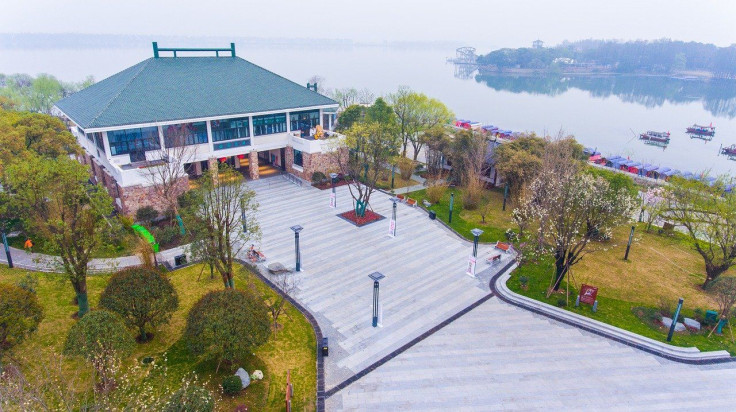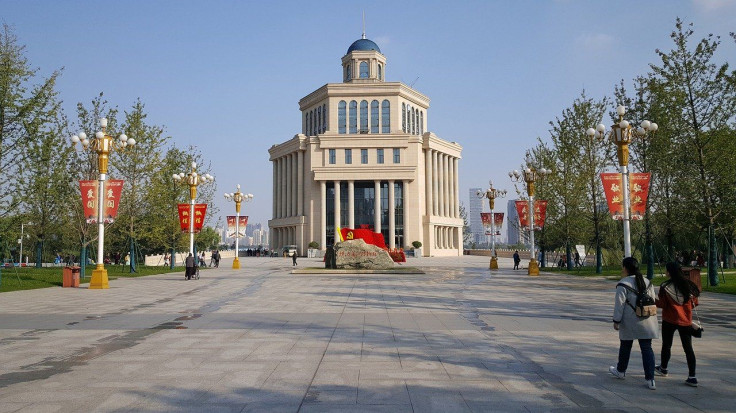Coronavirus Reopening: Wuhan's Struggles With New Normal Show The Path Ahead
KEY POINTS
- Wuhan has already lifted the lockdown and has reopened its economy
- The city is in its “new normal,” but the reality does not reflect previous optimism
- Businesses and daily life are still reeling, experiencing the dire effects of the lockdown
At the height of the coronavirus outbreak in Wuhan in January, the central government in Beijing imposed a strict lockdown on the city. No one could get in or out without valid reasons or proper permission from authorities. Except for essential businesses like grocery stores and pharmacies, everything else was shut down.
Economic activity in Wuhan was at a standstill, and this went on until April 8, when the lockdown was finally lifted, roughly 76 days after it was imposed. Much of the world, which is still in the midst of the pandemic, has been keenly watching Wuhan as to how the city will restore economic activity and normalcy. It would seem, however, that it is not going to be what everyone expects.

Life In Wuhan After The Lockdown
Everyone, particularly those living in Wuhan, has been eagerly anticipating the day when the lockdown is finally lifted. Local businesses are looking forward to reopening, and shoppers are excitedly preparing to revisit their favorite stores. Workers, on the other hand, are eagerly anticipating going back to work and earn once again. After travel restrictions were lifted on April 8, however, residents and businesses in Wuhan found out that the actual reopening would be agonizingly slow.
While most of the strict lockdown measures have already been lifted, many stores are still closed, and restaurant services are limited to takeaways. Citizens that venture out of their homes wear protective equipment, and most are trying to avoid each other. Although official statements might sound cheerful, the actual mood on the ground is much different. During a press conference announcing the end of the lockdown, a Wuhan official said that the industrial sector in the city is gearing for a 100% resumption of operations. According to some sectors, it is an optimistic statement but does not reflect the present reality.
A Swift Action
According to Shaun Roache, the S&P Global Ratings chief economist for the Asia Pacific, the lesson that Wuhan can give to the rest of the world is all about quick action. He said that Wuhan taught the world that while the early and swift response to the coronavirus may be costly to its economy, it might lead to a quicker reopening.
Roache, however, warned that lockdowns do have a disproportional effect on both small and medium-sized businesses. He said that these enterprises do not have instant access to credit to help them get up on their feet. They may also find a hard time meeting the requirements needed for them to open their businesses again.

Rent-Free Only For Some
It has been announced by the government that state-owned enterprises are not required to pay rent for three months. For those establishments with private landlords, however, rent payments and zero profits can push them out of business, according to one business owner interviewed by CNN. The news network visited Wuhan on April 21 and found that over half of the businesses in a once-busy commercial street remained closed.
In an interview over the state-controlled Global Times, a restaurant owner lamented the absence of customers. He said he opened for two days, but no one came to eat because it is forbidden. He also revealed he only got two or three orders from an online delivery platform during those days. The owner said that the cost of remaining open is much more than what he is presently earning, so he decided to close his restaurant again.
Several small business owners told CNN that while the government promised them assistance, it might not be able to reach them in time to save their small restaurants and shops. This will cause them to shut their businesses for good. Aside from restaurants and specialty shops, fitness centers and movie theaters remain closed with no announcement as to their reopening.
The New Normal
Many of the stores in Wuhan that have reopened found it necessary to change their business models. This is to adapt to the new normal taking place after the pandemic. Popular chains like Burger King, McDonald’s, Pizza Hut, Starbucks, and KFC, are now preventing customers from entering their places. Tables are instead set up at their storefronts, with staff going out to bring them their orders.
Gao Ting, an employee for the Chinese conglomerate Wanda Group, found that the working landscape has been changed. She said everyone is now wearing masks, and restaurants close early, some at precisely 7 PM, while others an hour or a few minutes before that. She also noticed that only a few people loiter after that time.
The most significant change, however, is the business slow down. Gao’s work includes measuring footfall for her boss, which invested in and developed one of the most popular shopping sections in Wuhan. She said that last year, their average daily visitors in the area is 60,000, but today, it is down to only 10,000 people per day. Among their biggest problems now are brands that are having lousy business days. These are stores that market a particular brand in clothing, accessories, and many more. She said her company has been trying to help them, but since most of them cannot afford rent anymore, they are closing down.

It Might Take A Long Time
Reports say that the central government in Beijing has been pressuring provinces to boost their floundering economy. Officials in Hubei province and Wuhan have been echoing hopeful rhetoric about bouncing back. Economists are not so optimistic about lasting recovery; however, as they said, signs are everywhere; it might take a long time for the economy to recover from the severe lockdown.
Larry Hu, an economist with Macquarie Capital Limited, agreed that there is going to be a recovery in the short term. “Production will recover first and then consumption because a lot of people are still reluctant to come out … but from a long term perspective, from a three-year perspective the virus is still going to hurt the long term growth of Wuhan,” he said.
On the part of Roache, he said that he believes that the manufacturing sector might recover rather quickly from the severe lockdown. He said that the service sector might be the last one to return to 100% productivity. In his opinion, the service’s return to that productivity rate is very important as it is the biggest employer in many economies.
A Second Wave
As if the economic slowdown is not enough, business owners and citizens also expressed their fears about a second wave of the coronavirus. In an interview with CNN, they said a second wave of infections might be only a matter of time. They said this could prompt another lockdown in an already shattered economy. Before the CNN team left the city Saturday, the health authority in Wuhan reported 19 new asymptomatic COVID-19 cases in the area.
For Ariel Zhong, a 25-year-old employee of Hu Ya, a leading video game live-streaming platform, they are still in the coronavirus period and not yet post. He said that the endgame of this crisis is dependent on the collective effort of countries worldwide. “Looking at other countries – [we] can’t say we’re safe... If other countries don’t control it, we will all be affected,” he said.
A Lot Of Uncertainties
Many people around the world have been looking at China to get a glimpse of what it could look like after stay-at-home measures are lifted. People in China, however, are still uncertain of what the future holds, and many are also worried as they watch other countries having a hard time containing the virus. For Roache, returning to anything that resembles normality may still be a ways off for Wuhan and for other countries worldwide.
© Copyright IBTimes 2024. All rights reserved.





















